Dance Moms stresses me out.
It stresses me out for a variety of reasons, but for the moment I'll stick with the fundamental value system espoused on the program.
I watch Dance Moms every week. In some ways it's a guilty pleasure, in others it's an opportunity for introspection on my own work as a dance instructor.
I don't want to disparage a cultural phenomenon that has likely encouraged young dancers to take up dance lessons when they otherwise may not have, but I also can't sit by and let this representation of dance studio experience be taken for common practice.
I don't teach a hippie-dippie classes. For even my youngest dancers, classes are structured around a syllabus that builds skills and promotes fine and gross motor development. But do I use the opportunity for end-of-class "freeze dance with props" as an incentive to encourage good behavior throughout class? Absolutely. Because kids love to take hold of a sparkly wand or a colorful scarf and do their own thing for a minute.
This does not mean I'm not training them to dance. My seven/eight/nine year olds enthusiastically participate when I give them impromptu verbal ballet vocabulary quizzes. Of course, rhyming makes it more enjoyable ("en dehors, out the door!" for outward rond de jambes), but connecting the vocabulary to the movement from a young age is one of many ways to enhance the learning experience for students. I love it when I demonstrate a fondu exercise and during a water break a student tells me, "that just makes me want to eat melty cheese!"
Dance should engage all the senses and dance class should appeal to all learning styles. I had a five-year-old student raise her hand after I demonstrated and explained a ¼ rond de jambe in order to tell me that in her estimation, "it's like the shape of a comma!" Once, when I quizzed a young class on what the definition of "chassé" is, a dancer described it as, "your back foot playing tag with your front foot." This kind of abstract, creative and associative thinking is exactly what we should be cultivating in young minds. To me, the exciting part about teaching dance comes not from knowing a student can rack up points at a competition for dislocating their hip to contort their leg behind their head, but rather that they can think outside the proverbial box, even when they have to learn their croissé and effacé positions in relation to an imaginary box (that's a little ballet joke for the non-dancers out there).
One of the more profound moments I had was when I presented a Merce Cunningham-ish style composition exercise to my pre-teen intermediate contemporary dance students. They received slips of paper with actions on them and were instructed to compose a dance phrase. Some action verbs were to be done with their arms or legs, while some papers indicated a spatial pattern to traverse, while still others described the tempo of movements. Once I gave them a moment to digest the assignment, I had a fascinating revelation.
None of them wanted to get it wrong. They asked me what certain things "meant" and I gave a general description, but told them that they could interpret it however they chose. They still seemed stilted. All of a sudden, it occurred to me that I had to explicitly tell them "dancers, there are no wrong answers!"
I went on: "What is the worst thing that is going to happen? I'm not grading you, this is your opportunity to make choices and take chances." Perhaps it shouldn't have been, but to me it was shocking how nervous they were to do the "wrong" thing. Life is all about learning from mistakes! I couldn't help but wonder if this is the kind of learning environment we cultivate when we, as they say, "teach to the test." I don't feel as if I'm of a radically different generation than my students, and I can certainly relate to filling in endless Scantron bubbles for standardized tests. I can vividly recall an acute fear of failing at school, but to see that kind of visceral worry manifest itself in a creative environment felt like both a shock but also an opportunity.
I do this kind of creative composition exercise in different iterations with different age groups and in different settings. Anyone who works with kids can tell you their inventiveness is inspiring. I regularly prescribe precise dance combinations and actively correct dance technique, but I also make it a point to build in time to cultivate artistry. Not only does this encourage imaginative thinking, it gives students ownership in the movement they perform.
Kids need spaces to experiment, to make mistakes, and to be comfortable knowing there is often more than one correct answer to a problem.
The girls on Dance Moms are gorgeous dancers and have lovely technique and performance personas. This is no judgement against them. It is a reflection on the variation in values we place on young performing artists. I want all the best for the Dance Moms girls both professionally and personally. For all kids, however, I want dance to be fun. I want it to augment the learning they're doing in the classroom and on the playground and at home. I want dance class to be a nonjudgmental creative environment and a time to move and groove and work out the kind of energy we ask kids to contain while seated at desks.
I don't claim to be a definitive authority on what kids' dance classes should be like. I just want to offer a counterpoint to the narrative offered on Dance Moms. There is more to dance class than making a music video or dancing on Broadway. There are tangible and intangible benefits of dance classes for students of all ages, and I hope the invaluable experience of taking dance lessons isn't lost in the scripted glitz of reality TV.